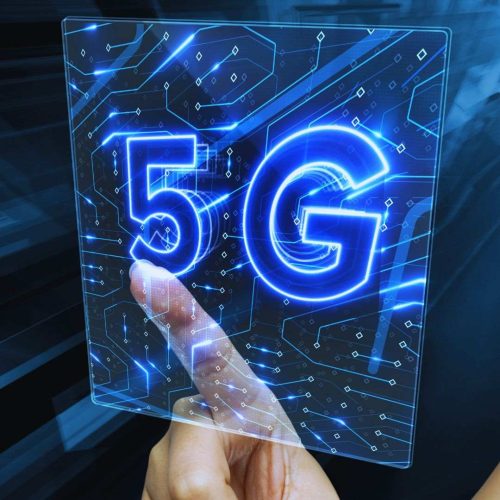Remote IT infrastructure forms the backbone of modern businesses, with 5G networks unlocking unparalleled potential for growth and efficiency.

Image courtesy of https://www.freepik.com/
Remote IT Infrastructure: The Nerve Center of Digital Operations
At the outset, remote IT infrastructure functions as the control hub for seamless operations across diverse locations.
Moreover, it empowers businesses to deliver uninterrupted services while adapting to dynamic market demands.
Notably, as organizations adopt hybrid work models, remote IT systems have become indispensable for maintaining resilience.
5G Networks: The Pulse of Next-Generation Connectivity for Remote IT Infrastructure
On another level, 5G is more than just a speed upgrade—it’s a technological ecosystem redefining digital interactions and IT frameworks.
Consequently, its groundbreaking features, like ultra-reliable connections and minimal delays, bring an unprecedented level of efficiency to IT systems.
Key Advancements Introduced by 5G:
- Exponential Data Speeds: In turn, enables instant data sharing and seamless app performance.
- Reduced Latency: Most importantly, critical for real-time services like virtual reality (VR) and automated systems.
- Enhanced Capacity: Beyond that, supports IoT devices at scale, from industrial sensors to consumer gadgets.
Thus, 5G is reshaping how organizations architect and optimize their remote IT systems.
Scaling Remote IT Infrastructure Systems with Dynamic 5G Features
With this in mind, scalability—a cornerstone of modern IT strategy—gains new meaning with 5G networks.
Accordingly, businesses can rapidly expand IT capabilities without overhauling their core infrastructure.
This scalability is driven by features like network slicing, which allocates dedicated resources for specific applications.
The Role of Edge Computing:
- For example, processes data closer to users for faster outcomes.
- Additionally, minimizes bandwidth use, reducing operational costs.
Through 5G, companies achieve unparalleled flexibility in designing IT systems tailored to their unique demands.
Advanced Remote IT Infrastructure Security Solutions Powered by 5G
At the same time, as IT operations decentralize, cybersecurity has become paramount.
Certainly, 5G bolsters remote IT systems with robust security protocols integrated at the network level.
Security Features Enabled by 5G:
- Encrypted Traffic: In essence, ensures confidentiality during data transfers.
- Isolated Network Segments: By extension, protect sensitive operations with dedicated virtual lanes.
These features mitigate risks in a landscape where cyber threats continue to evolve.
Furthermore, 5G’s speed reduces exposure windows, adding an extra layer of defense against breaches.
Real-World Applications of 5G-Driven Remote IT Infrastructure
To illustrate, from automation to remote care, industries are leveraging 5G to revolutionize their IT capabilities.
How Sectors are Innovating:
1. Healthcare:
- Remote Care: First and foremost, enables telemedicine with high-definition video and real-time diagnostics.
- Connected Devices: Subsequently, synchronizes medical equipment for seamless patient monitoring.
2. Manufacturing:
- Smart Factories: Specifically, integrates IoT devices for precise automation and efficiency.
- Predictive Analytics: Thereafter, identify maintenance needs to prevent downtime.
3. Education:
- Immersive Learning: Undoubtedly, VR-powered classrooms enrich student engagement.
- Global Collaboration: Meanwhile, facilitates access to diverse knowledge bases.
4. Retail:
- Personalized Shopping: To clarify, AI-driven insights create tailored experiences for customers.
- Optimized Logistics: Subsequently, real-time tracking enhances supply chain efficiency.
These examples underscore how 5G is transforming industries and reimagining customer interactions.
Meeting Evolving Business Expectations
In another context, for businesses, adopting remote IT infrastructure backed by 5G requires addressing user priorities.
Today’s organizations seek systems that integrate seamlessly into existing workflows while remaining adaptable.
What Users Value Most:
- Reliability: Above all, continuous uptime for critical operations.
- Ease of Use: Moreover, interfaces are designed for minimal training.
- Future-proofing: Likewise, systems that evolve with emerging technologies.
By focusing on these needs, solution providers create IT platforms that remain indispensable for businesses.
Navigating the Challenges of 5G Implementation
All things considered, despite its promise, transitioning to 5G-enhanced infrastructure presents challenges.
Common Barriers and Solutions:
- High Costs: Offset by phased rollouts and leveraging existing hardware.
- Legacy System Compatibility: Furthermore, resolved through modular designs and gradual migrations.
- Regulatory Compliance: Equally important, managed with early alignment to legal standards.
With strategic planning and expert partnerships, companies can overcome these hurdles.
Emerging Trends in 5G and IT Systems
As a result, as 5G adoption accelerates, new trends are shaping the evolution of IT infrastructure.
Top Innovations to Watch:
- AI-Driven Networks: In particular, automation streamlines IT management and predictive maintenance.
- Decentralized Solutions: Moreover, blockchain secures data exchanges and reduces dependency on central servers.
- Green IT: On top of that, energy-efficient systems are aligned with sustainability goals.
These advancements highlight the growing convergence of technology and environmental stewardship.
The Competitive Advantage of 5G-Enabled IT Infrastructure
In this context, organizations that embrace 5G-powered IT systems position themselves as leaders in their markets.
With enhanced speed, scalability, and security, these companies can adapt to future challenges effortlessly.
Why 5G is Critical:
- For one thing, it supports complex operations without delays.
- Above all else, it ensures robust customer experiences in an always-on digital economy.
Investing in this transformation drives long-term success in a competitive global landscape.
A Look Ahead: Harnessing the 5G Revolution
On a final note, the transition to 5G-enabled remote IT infrastructure marks a turning point in how businesses operate.
Not to mention, it represents an opportunity to rethink strategies and embrace bold innovations.
Actionable Steps to Get Started:
- Conduct an IT readiness assessment to identify gaps.
- Partner with 5G technology experts to ensure smooth transitions.
- Align IT strategies with emerging industry standards and customer needs.
In conclusion, embracing these steps now ensures businesses thrive in an interconnected future.
Closing Thoughts on Remote IT Infrastructure
Altogether, remote IT solutions infrastructure, fueled by 5G networks, is shaping a smarter, more agile era of digital transformation.
Ultimately, by leveraging these technologies, businesses can achieve new heights of productivity, innovation, and resilience.
The journey begins with embracing the future today.







